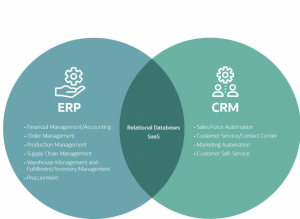This week we learned two important acronyms. The first is ERP, which stands for enterprise resource planning. The purpose of an ERP is to manage entire business activities. Everything from customers to project management, to operations, ERPs take care of everything. The main objective however is to manage business operations.
The second acronym we learned was CRM. This stands for customer relationship enterprise. CRMs are responsible for improving customer relations. There are three different types of CRMs which include collaborative, analytical, and operational. The purpose of all three of these is to create exceptional customer relationships.
With that, there are a decent amount of similarities and differences between both CRMs and ERPs. For one, they are both applications that businesses use to manage everyday tasks. They both optimize processes and survey reports. As for the differences, the main difference is that ERPs are mostly for financial data and CRPs are utilized by customer service departments.

Hey Paige, your blog post was written really well! I loved that you included the graphic that you did because all the CRM’s and ERP’s are used for entirely different purposes there is slight overlap. As someone who works at a small business, I can tell you that ERP’s and CRM’s definitely keeps things running smoother and definitely keeps our business running more efficiently.
Hi Paige,
I agree with your post and that both ERPs and CRM are very useful for organizations. Organizations can manage their customer relationships better using CRM technology, They can see where they have succeeded and where they have fallen short. ERPs can be used to make processes with customers more efficient because it gives more access to important data.
Hello Paige. I like the image you attached to your post. It shows clearly the similarities and differences between the ERP and CRM. That was a nice visual to see. Very informative post about them both. Thank you.